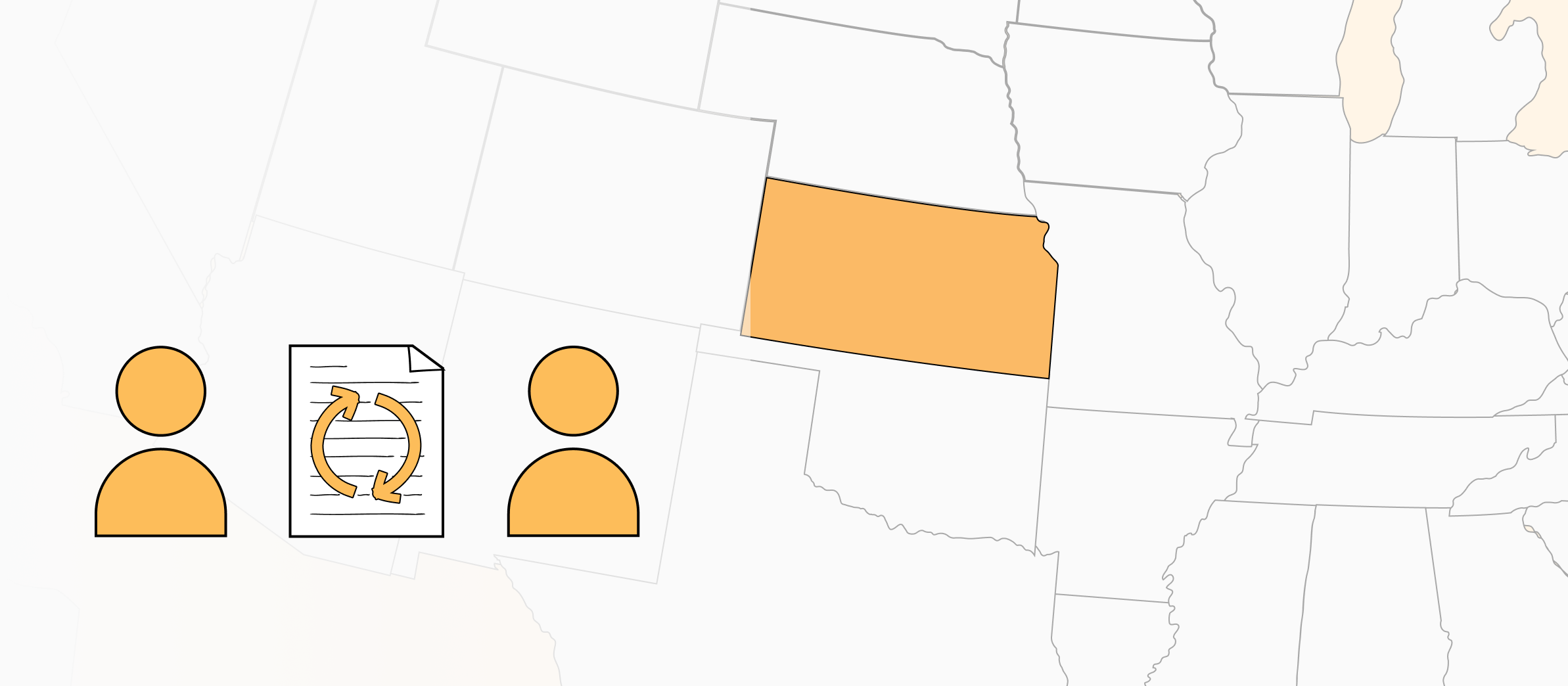Kansas law does not grant tenants, by default, the right to sublease. Instead, they must have explicit, written consent from the landlord to do so. If such consent was not included in the lease, the landlord reserves the right to deny future requests.
Does a Tenant Need the Landlord’s Permission to Sublet in Kansas?
In Kansas, a tenant does need a landlord’s explicit written consent to sublet. Either the original lease or a separately signed agreement can provide this consent.
Even if permission to sublet is granted, a landlord is allowed to screen potential subtenants and deny them for legally acceptable reasons.
Tenants interested in subletting should start by reviewing the lease agreement to see what language it includes about subleasing. The four most common scenarios of sublease language in a lease agreement are:
- A clause strictly prohibiting subletting
- A clause requiring a landlord’s written permission to sublease
- A clause allowing a tenant to sublease (without additional permission)
- No language or clause whatsoever about the permission to sublease
1. Lease Clause Strictly Prohibiting Subletting
“The Landlord and Tenant agree that the Tenant shall not have the express and unqualified rights to sublease the rental premise.”
There may already be a provision in the signed lease establishing that the tenant is not allowed to sublease. If this is the case, a tenant may only be able to sublet through making an amendment to the lease.
2. Lease Clause Requiring Landlord’s Permission
“The Tenant shall not assign or sublet any part of the leased premises without prior written consent of the Landlord.”’
If the tenant wants to sublet, they would need additional written confirmation from the landlord. If the landlord is asked, they are not required to approve.
3. Lease Clause Allowing Tenant to Sublease Without Additional Permission
“The Landlord and Tenant agree that the Tenant shall have the express and unqualified rights to sublease the rental premise.”
When there is a lease provision explicitly allowing the tenant to sublease the property without the landlord’s permission, then the tenant may do so. Depending on the lease clause, the tenant may not even have to inform the landlord of subletting.
4. Entire Lease Containing No Mention of Subleasing
When there is no lease provision pertaining to subletting, it is required that the tenant receive the landlord’s permission prior to doing so.
Can a Landlord Prohibit a Tenant from Subletting in Kansas?
Unless prior written consent has already been granted, a landlord can prohibit a tenant from subletting in Kansas. A landlord reserves the right to deny any and all future requests from a tenant to sublease.
Denials generally occur if the new subtenant would be unable to meet the financial requirements when renting out the premises. Another avenue for denial exists if the landlord were to believe the new subtenant is of bad character, which would reflect poorly on the landlord.
If the lease agreement already explicitly grants the ability to sublet, then a landlord is unable to prohibit subletting under those terms. The landlord would only be able to forbid subletting by amending the lease or signing a new lease, which must be agreed upon by both parties.
What Rights do Subletting Tenants have in Kansas?
A tenant who subleases (“subtenant”) has the same rights and responsibilities as the original tenant. This means the subtenant is treated the same as any other tenant under Kansas law when it comes to rights such as privacy, health and safety standards of a rental unit and due process for an eviction.
However, subtenants cannot sue the original tenant’s landlord when their rights are violated. The subtenant must sue the original tenant, who in turn can sue the landlord if the issue is caused by the landlord (and isn’t remedied in a timely manner after being properly notified).
When a subtenant causes any damage, a landlord will most likely deduct the cost of those damages from the original tenant’s security deposit. The original tenant would then have to sue the subtenant to recover money lost from the security deposit.
Subtenant Rights in Illegal Sublets
Subtenants in illegal sublets do not automatically have the legal right to break the terms of their sublease. Even if the landlord did not consent to the sublease, the contract may still be considered valid between the subtenant and tenant.
Legal actions against an illegal subtenant takes the form of an eviction. Landlords will give notice that the illegal subtenant has 14 days to cure the violation or 30 days to vacate the premises, unless the lease states otherwise.
For those illegal subtenants that do not leave, a landlord would be able to take them to Small Claims Court, where there is no filing fee.
What are the Consequences for Illegally Subletting in Kansas?
If a tenant subleases their unit without the landlord’s explicit written permission, the tenant is in breach of their lease. In Kansas, a lease violation permits a landlord to evict the tenant and subtenant (30 Day Notice to Comply or Vacate) and to sue the original tenant for any resulting damages. Kansas law does not set the notice requirements, and therefore, the lease most likely will.
In addition to the landlord, the subtenant also may have grounds to take legal action if the original tenant sublet the unit illegally.
Evictions for Illegally Subletting in Kansas
Landlords in Kansas must provide the tenant a chance to fix the lease violation, such as illegally subletting. A landlord must provide the tenant with a 30 Day Notice to Comply or Vacate.
These eviction notice types give the original tenant 14 calendar days to cure the violation or 30 calendar days to move out. Once the notice expires, if the tenant has not taken the required action, the landlord may then proceed with the second step of the eviction process, which entails filing a petition with the county court. This next step in the eviction process takes about 1-3 months.

